Extract from air strike mission in Vietnam, circa 1971-1972
Reproduced with permission of Graeme Goldsmith
Listen to an audio extract of an air strike mission against a North Vietnamese Army (NVA) position 38km from Da Nang, circa 1971-1972. The operation involved South Vietnamese and US aircraft, and was co-ordinated by a New Zealand Forward Air Controller (FAC), Flight Lieutenant Graeme Goldsmith, who was attached to the 20th Tactical Air Support Squadron (20th TASS), USAF.
The recording was taken by the crew of the strike (attacking) aircraft. On this occasion they were from Da Nang Air Base, where Goldsmith and another New Zealander, Flight Lieutenant Peter Waller, were based – hence the reference to a "drink or two" later. This was quite a rare occurrence as the New Zealand FACs mainly worked with strike aircraft from bases in southern Vietnam, Thailand or those from aircraft carriers in the Gulf of Tonkin.
First on the scene was a pair of Cessna A-37 Dragonfly attack aircraft of the (South) Vietnam Air Force. Their attack was followed up by two pair of US McDonnell Douglas F-4 Phantom fighter-bombers. The ‘whirring' sound heard in the audio extract is the Phantom's six-barrelled 20mm M61 Gatling cannon firing at the target area.
Graeme Goldsmith directed the operation from a Cessna O-2 Skymaster observation aircraft. As FAC, he was totally responsible for the outcome of the air strike. It was a high-pressure role. During an air strike, FACs had to maintain contact with as many as five different agencies. These included their own parent organisation (the Direct Air Support Centre or DASC); local South Vietnamese civilian authorities; South Vietnamese and US ground forces; and the strike aircraft, of which there could be up to four pairs circling waiting to attack.
Transcript:
US pilot: Air speed good, 5000 feet...4000...3500 [sound of 20mm M61Gatling cannon].
US pilot: Not a bad strafe...
Graeme Goldsmith: No that's nice there lead [lead plane]. I think those guys are going to regret they ever shot as those choppers.
US pilot: Say again.
Graeme Goldsmith: I said I think those guys are going to regret they ever shot as those choppers.
US pilot: [laughing] Roger that.
Graeme Goldsmith: OK two your contact on your run on the white smoke that's short and it runs up to your last bomb, the old brown smoke, if you could start it off there at the white and run it up to the brown.
US pilot: OK, we'll be in the general area.
Graeme Goldsmith: Yeah that'll be real great...once again just in that general area – if we move a little bit to the right; about three-zero metres to the right.
US pilot: OK, at the first white smoke?
Graeme Goldsmith: Yeah that's affirm [affirmative].
US pilot: Roger that.
US pilot: 5000, you passed.
US pilot: Roger
US pilot: Left, left, coming back right [sound of 20mm M61 Gatling cannon].
US pilot: That's all there is.
US pilot: Rog [er]
Graeme Goldsmith: Yeah, that's good there lead.
US pilot: Lead to Winchester?
Graeme Goldsmith: OK, fine.
US pilot: Two's [second plane] off to the north.
Graeme Goldsmith: OK Sir.
US pilot: And that'll be about all for today heli.
Graeme Goldsmith: That's real fine. It'll take about five minutes to get the choppers back in - perhaps I could phone your BDA [Bomb Damage Assessment] through when I get back in about an hour?
US pilot: OK Sir, appreciate that. Do you have any quick coordinates and then you can just call the rest in?
Graeme Goldsmith: Yeah OK, I'll give a target coordinate now – Zulu Charlie 028651 [ZC028651]. We'll have you on target at 05 and we'll have on target at 35.
US pilot: Roger Sir, real pleasure working with you – that was my finny [final] flight today and really appreciate you giving me a good one babe.
Graeme Goldsmith: OK, that's good for me too. We've really done those dinks out down there, and I'll probably be over tonight for a beer or two.
US pilot: Well come ahead.
Graeme Goldsmith






